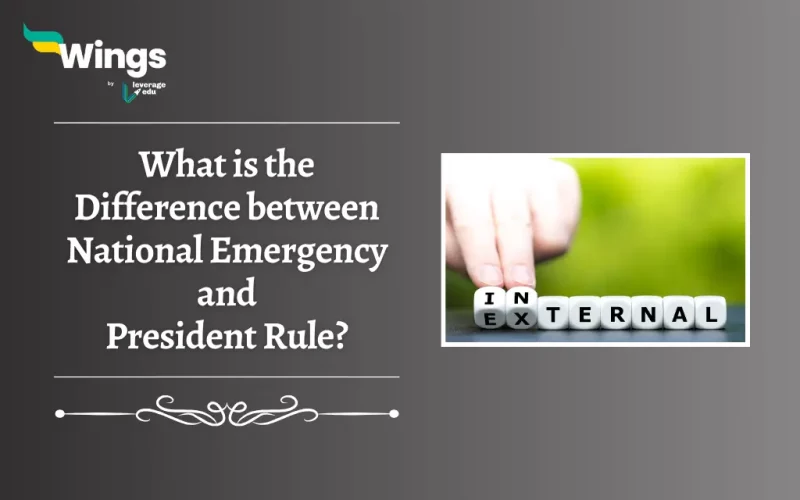The Indian Constitution gives the Central government the power to manage through Emergency Provisions in two ways which are National Emergency and President’s Rule. While both address disruptions, they differ in their triggers and effects. National Emergency deals with the entire country coming under fire in situations like war or external aggression. On the other hand, President Rule or State Emergency occurs when a particular State in the country has a breakdown in their constitutional machinery. Read on to learn about the difference between National Emergency and President Rule!
Difference between National Emergency and President Rule
Here is a detailed difference between both:
| Difference between National Emergency and President Rule | ||
| Feature | National Emergency | President Rule |
| Purpose | Declared in case of war, external aggression or armed rebellion threatening the security of India. | Imposed in case of failure of constitutional machinery in a State of the country. |
| Initiation | Proclamation by the President under Article 352 of the Indian Constitution. | Proclamation by the President under Article 356 of the Indian Constitution. |
| Authority | The President has the power to declare. It has to get the approval of the Cabinet. | The President has the power to impose it based on the Governor’s report. |
| Applicability | Applies to the whole country or specific parts. | Applies to a particular State or states. |
| Duration | Initially for 2 months, extendable indefinitely with Parliamentary approval every 6 months. | Initially for 6 months, extendable for a maximum of 3 years with Parliamentary approval every 6 months. |
| Effects on Fundamental Rights | Suspends certain Fundamental Rights guaranteed by the Indian Constitution. | Does not suspend Fundamental Rights guaranteed by the Indian Constitution. |
| Effect on Union-State Relations | Increases the power of the Union Government over all the States. | Directly places the State under the control of the Union Government. |
| State Government Dissolution | Does not necessarily result in the dissolution of State governments of the country. | Often leads to the dissolution of the State Legislative Assembly and imposition of President’s Rule. |
Related Blogs
Lastly, we hope you liked our blog and gained an understanding of the Difference between National Emergency and President Rule. Moreover, you may even read more blogs and empower yourself with knowledge regarding Civics and Polity!
 One app for all your study abroad needs
One app for all your study abroad needs













